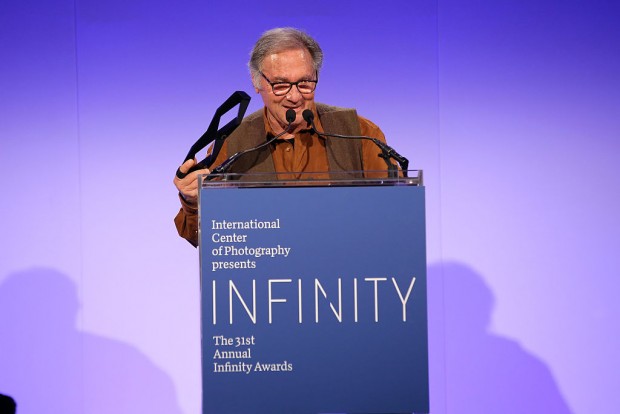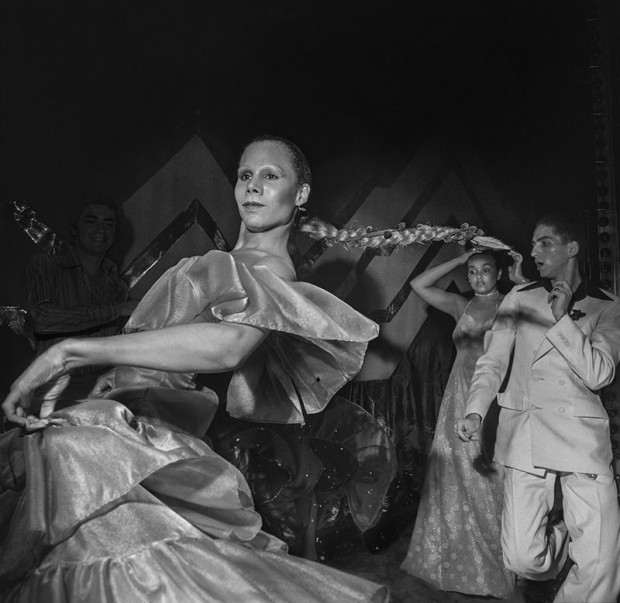Larry Fink, a widely-respected photographer and documentarist of American Society, has recently passed at the age of 82 years old at his home in Pennsylvania, as announced by New York's Robert Mann Gallery, a long-time partner of Fink. As of now, no cause of death has been specified.
The photographer first earned notoriety in the late '70s after publishing his photography series called "Social Graces." In the pictures, Fink laid down a story interwoven between two worlds, photographing both the Sabatines, a run-of-the-mill family in rural Pennsylvania, and the elites across different cities.
In 1979, these works of Fink's were showcased in a solo exhibition at the Museum of Modern Art in New York, which were then published as a monograph by the nonprofit publisher Aperture.

NEW YORK, NY - APRIL 30: Infinity Award winner photographer Larry Fink speaks onstage at the International Center of Photography 31st annual Infinity Awards at Pier Sixty at Chelsea Piers on April 30, 2015 in New York City
Brief Biography of Larry Fink and His Body of Work
Fink was born in 1941 in Brooklyn and was raised by a lawyer, Bernard Fink, and an activist, Sylvia Caplan Fink. Fink describes his mother as both a "bourgeois" and a "Marxist," which contributed to his "contradictory" upbringing. In his teenage years, Fink took up photography as he studied at the New School of New York under the mentorship of Lisette Model, an American street photographer who has Austrian roots.
Fink, later on, would develop a six-decade-long career, with influences he would often accredit to both his teacher and his mother. The late photographer said to the New York Times that "the set of contradictions" that he has lived through, has effectively "embellished" his politics and view on aesthetics.
"The work was meant to be political, not polemical. It turned out to be not necessarily kind, but certainly honest. And not cruel," He added.
When he turned 18 in 1958, Fink dropped out of school to work a photography job alongside a group of artists and writers from the Beat movement who jumped from state to state across the USA. The photographer's role was to document the group's journey at each stop. After he returned to New York in the middle of the '60s, Fink got a chance to candidly photograph Andy Warhol himself and his inner circle.

NEW YORK - MAY 1977: Studio 54, New York
Fink developed the signature style in 1976, composed of highly contrasting black and white photos that achieve an "alienating" aesthetic for the subject. All of his experiences up to this point have pushed Fink into recognition, which netted him a grant from a Guggenheim Fellowship. He also met New York gallerist Robert Mann two years after this, who became his dear friend and colleague, as Mann formally represented Fink's work in 2021.
The late photographer would change his focus to sports photography later on, between the late-'90s and mid-2000s, acquiring work from both Vanity Fair and the New Yorker. Progressing to the later years of the decade, Fink put out two collections, "Runway" and "The Vanities: Hollywood Parties," that chronicled the "hidden" social gatherings of high-class America.
Reflecting on Fink's deeply distinct and seasoned portfolio, Mann shared how unapologetic Fink was with the stories his images would routinely tell, and has a unique talent for capturing honest and unstaged sceneries.
The energy and style he brought to the photography medium are unparalleled. I've never seen someone else execute it quite like that," the gallerist said.



